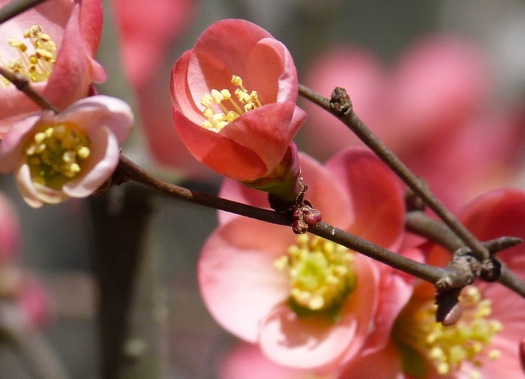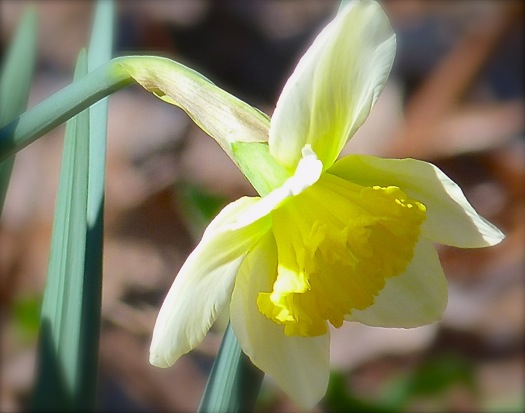Early Spring, Conquering Weeds
 Sunday, February 28, 2016 at 2:30PM
Sunday, February 28, 2016 at 2:30PM  Forsythia and early spring daffodils are beginning to bloom in the front garden.Signs of spring are everywhere in the garden: spots of chartreuse green emerging along branches; emerald shoots pushing out of the earth; flower buds swelling till their lustrous, candy colored contents are released; birds singing and performing courtship dances in the air; children playing outside, their shouts and laughter carrying through the woods from an adjacent neighborhood.
Forsythia and early spring daffodils are beginning to bloom in the front garden.Signs of spring are everywhere in the garden: spots of chartreuse green emerging along branches; emerald shoots pushing out of the earth; flower buds swelling till their lustrous, candy colored contents are released; birds singing and performing courtship dances in the air; children playing outside, their shouts and laughter carrying through the woods from an adjacent neighborhood.  Rosa rugosa 'Alba', emerging from dormancy
Rosa rugosa 'Alba', emerging from dormancy
 Flowering Quince (Chaenomeles)
Flowering Quince (Chaenomeles)
 Daphne odora 'Marginata' (Variegated winter daphne)
Daphne odora 'Marginata' (Variegated winter daphne)
 Daffodil
Daffodil


 Forsythia
Forsythia
 Summer snowflakes (Leucojum aestivum). Despite the name, these bloom in early spring for me.
Summer snowflakes (Leucojum aestivum). Despite the name, these bloom in early spring for me.
And weeds, lots and lots of weeds.
It was a particularly pleasant day, and I spent a good portion of it on my knees in the garden, or else sitting on my rump, happily pulling weeds. After several days of rain earlier in the week, the ground was soft and many of the weeds came out easily.
There are three main ways I get rid of weeds:
Simply chopping the tops off at ground level is a temporary esthetic fix, but pulling them out by the roots is far more effective. I love my hoematic, a versatile tool that is indispensable for getting them out by the roots. My well used hoematic
My well used hoematic
Smothering weeds with a good layer of mulch is a quick way to beautify the garden. For areas with heavy weed cover I use newspaper, brown paper sacks, and even cardboard layered over the ground, then topped with an attractive mulch, such as pine straw or pine nuggets.
I limit the use of herbicide, but I do use it for truly obnoxious weeds like poison oak.
I don't mind weeding. I let my thoughts drift as I mechanically attack the chore. I think about God, about relationships, about garden design. I ponder politics and compose blog posts. I wonder at the force that causes these unwanted plants to erupt by the thousands. They appeared almost overnight, and already many of them, even the babies, are producing flowers, determined to churn out another generation before I hack them to death.
Weeds grow year round in my climate. Even in winter, on milder days, it is a good idea to grab a few in passing. If I pull ten weeds, I am preventing hundreds of wanton offspring. On days dedicated to weeding, I am euphoric over the unnumbered multitudes that have been thwarted. I am not discouraged that I have removed a mere bucket from an ocean of weeds. I focus on what I have done, rather than on what I can never do.
I will not conquer all weeds. That's OK. I enjoy the battle, for it gets me into the garden, where I experience the earth and watch the good guys grow.Grape hyacinth
 Hellebores
Hellebores
